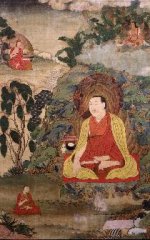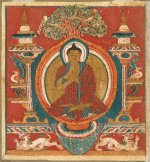The Kadam (bka’ dam) tradition was the first of the so-called New Schools of Tibetan Buddhism, traditions that arose during the Second Propagation of Buddhism in Tibet in the tenth century. The Kadam tradition began with Dromton Gyelwai Jungne, a disciple of the Bengali teacher Atiśa Dīpaṃkara, who had been invited to Tibet by the kings of Purang in western Tibet to revitalize monastic Buddhism there. Dromton founded the monastery of Reting and propagated the Lamrim and Lojong teachings, which lay out a complete path to Buddhahood and means of training the mind, respectively. The Kadam teachers were known for their monastic discipline, a character that was adopted by the Geluk tradition that supplanted it in the fourteenth century, adopting its teaching and absorbing its monasteries.



